Sections
In conventional semiconductor devices we are aware that the movement of the charge carriers or the electrons is exploited for creating the useful semiconductor devices. But we know that an electron also has a spin apart from its movement that is not considered in devising semiconductor devices. This has led to the evolution of spintronics which uses the spin of electrons in improving the properties of semiconductor devices.
Spintronics is the study of the electron spin or it deals with the spin electronics with its related magnetic moment in solid state devices.
Spintronics or the spin electronics exploit the spin of the electrons together with the transport of electrons for various applications such as accessing, storing, data transferring and processing with higher capabilities and speed or in other words, spin of the electron is manipulated for storage and information processing.
Spintronics is an emerging field in nanotechnology.
Spintronics combines magnetism and electronics.
Before we go on with the details of spintronics, let me give a brief description of an electron. We are familiar that an electron is a negatively charged particle that surrounds the positively charged nucleus in fixed orbits. The three basic properties of an electron are its charge, mass and spin.
Electrons around the nucleus have orbital angular momentum due to its spin around the nucleus and spin angular momentum due to its spin on its own axis. We know that the electron is associated with a charge and the movement of charge generates a magnetic field.
Due to the quantum mechanical spin of an electron it has a magnetic dipole moment i.e., it can behave like a tiny magnet. The spin of the electron can be in any of the two directions with the magnetic field pointing up or down.
The Pauli Exclusion Principle states that there can only be a maximum of two electrons for every one orientation, and the two electrons must spin in opposite direction i.e., one electron has ms=+1/2 and the other electron has ms=−1/2 where ms is the spin quantum number.
![]()
In conventional devices we consider only the transport of the charge carrier or the electron but when the spin of the electron is exploited, we can have devices that have better properties than the conventional devices which reveal the importance of spintronics in the field of electronics.
Electron spin is a process in nanoscale and therefore the spintronic devices are small with increased speed and storage capacity.
Since the electron can spin in either direction, magnet field can orient in two ways either up or down. When the binary digits are used to encode the information, it can have four bits i.e., low (0) up, high (1) up, low (0) down and high (1) down called quantum bits (qubits) and this adds to the additional two states to the conventional binary states of high and low which accounts for the added capacity and speed for spintronic devices. The information is stored into the spins as a particular quantum bit.
They also have an added on advantage that the information can be stored for few nanoseconds which is relatively a longer time than conventional devices which makes spintronic devices suitable for making memory storage and magnetic sensors applications and for quantum computing.
With the evolution of GMR and TMR, the applications of spintronics have emerged with a breakthrough. Spintronics have found applications in various fields:

Giant magnetoresistance(GMR) is observed in thin film structures consisting of alternating ferromagnetic and non-magnetic conductive layers. Depending on the orientation of the magnetic dipole moments the electrical resistance varies with the external magnetic field. The electrical resistance is small for parallel magnetization and large for anti-parallel magnetization. The magnetoresistance is used to sense the changes in magnetic fields. Recent developments have led to the emergence of magnetic tunnel junction devices where the tunneling current depends on spin orientations of the electrodes.
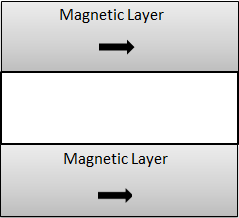
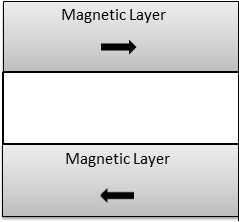
a,Low Resistance b,High Resistance
According to the alignment of the magnetic dipole moment, materials can be classified as:
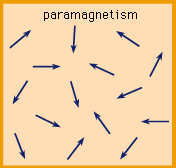
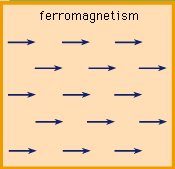
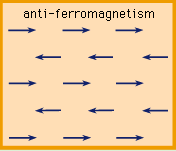
The total dipole moment of a material with filled electron shells is zero as the magnetic dipole moment of every electron is cancelled by the magnetic dipole moment of the electron pair. So atoms with partially filled electrons or unpaired electrons can only have a net magnetic moment.
Advantages of Spintronics
There are several advantages of spintronics that makes it apart from the convetional devices. The few avantages of spintronics are listed below:
There are a large number of advantages for the use of spintronics in creating more improved applications in the field of electronics, combining semiconductor devices together with the spin electronics.
The foremost advantage of a spin transistor from the conventional transistors is that the spin states of a spin transistor can be detected and changed without the application of an electric current. This property is utilized in MRAMs which can store more data in limited storage space and consume only very less power. The end product is much more sensitive than the conventional transistor. It uses very less costly materials and also they are very small in size. The increased sensitivity of the spin transistor has led to the creation of more sensitive automotive sensors.
The second advantage of the spin transistor is that it can be used as a volatile solid state storage device that does not require the application of current continuously. It is also a very cost effective device.
Spin Field Effect Transistor is considered as one of the most advanced applications in the field of spintronics. It was proposed by Datta Das in 1990. The spin FET construction and working is as follows.
Construction: The Spin Field Effect Transistor consists of a source and a drain that are made of ferromagnetic materials. The crucial part of the device is the non-magnetic layer that transmits and controls the spin polarized electrons from the source to drain. The spins are injected into the source and is transmitted to the drain by this layer (non magnetic). These are also known as semi metals as they have large spin diffusion lengths. The injected spins then undergoes what is known precession due to the spin-orbit coupling effect. Precession is the change in the rotational axis of the spinning electron.

Working
Case I: When Vg=0
For the working of the spin Field Effect Transistor, the electrons are injected into the source. Initially, when the gate voltage Vg=0, the injected spins transmitting through the non-magnetic layer starts precessing before they reach the collector. The precessing of the spin polarized electrons thereby reduces the net spin polarization.
Case II: When Vg>>0
When the gate voltage Vg>>0, the precession of the spin polarized electrons is controlled with the electric field thereby permitting the spins to reach at the drain with the same polarization.
Sections